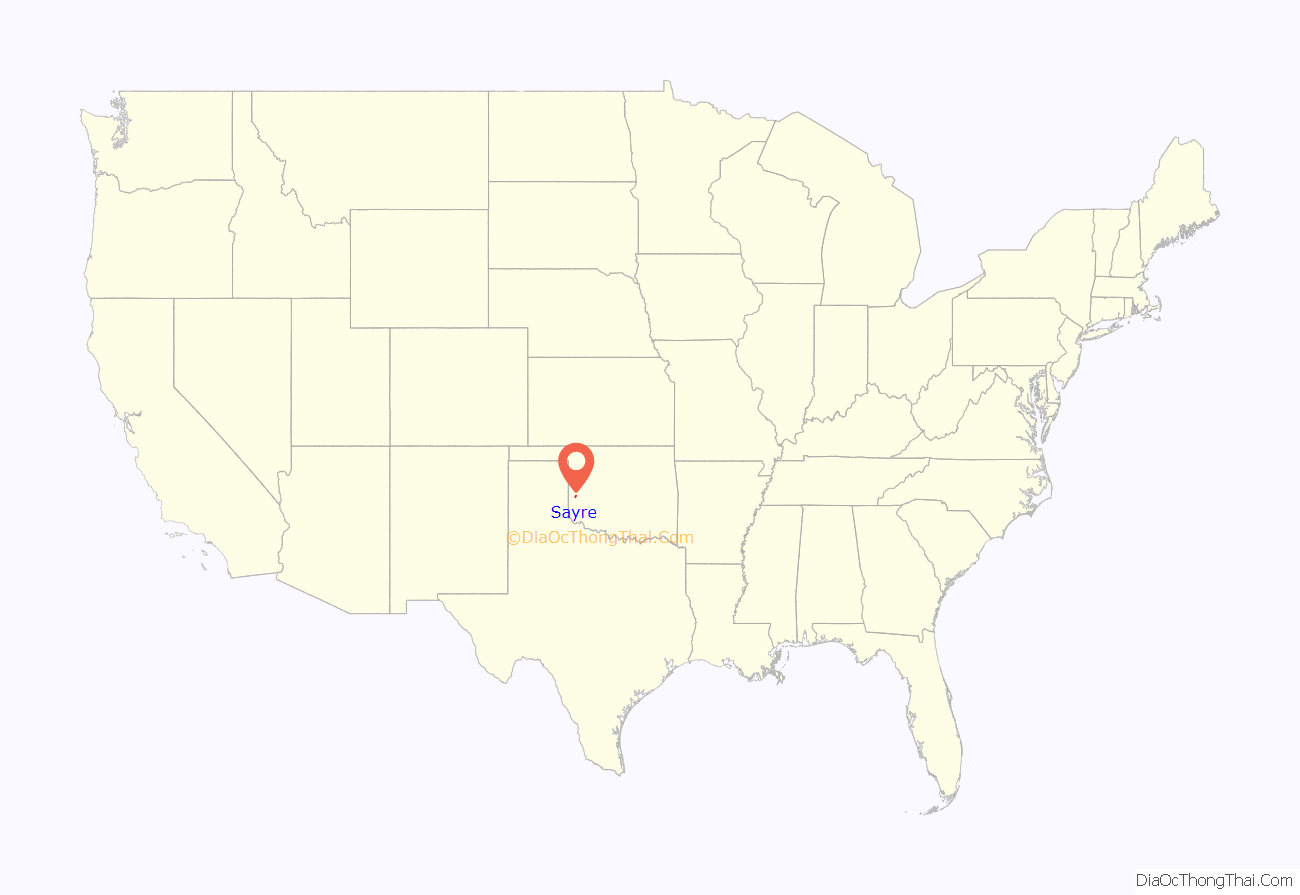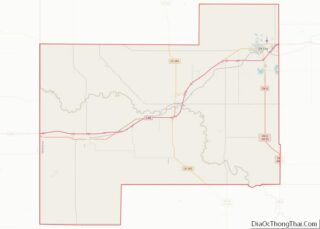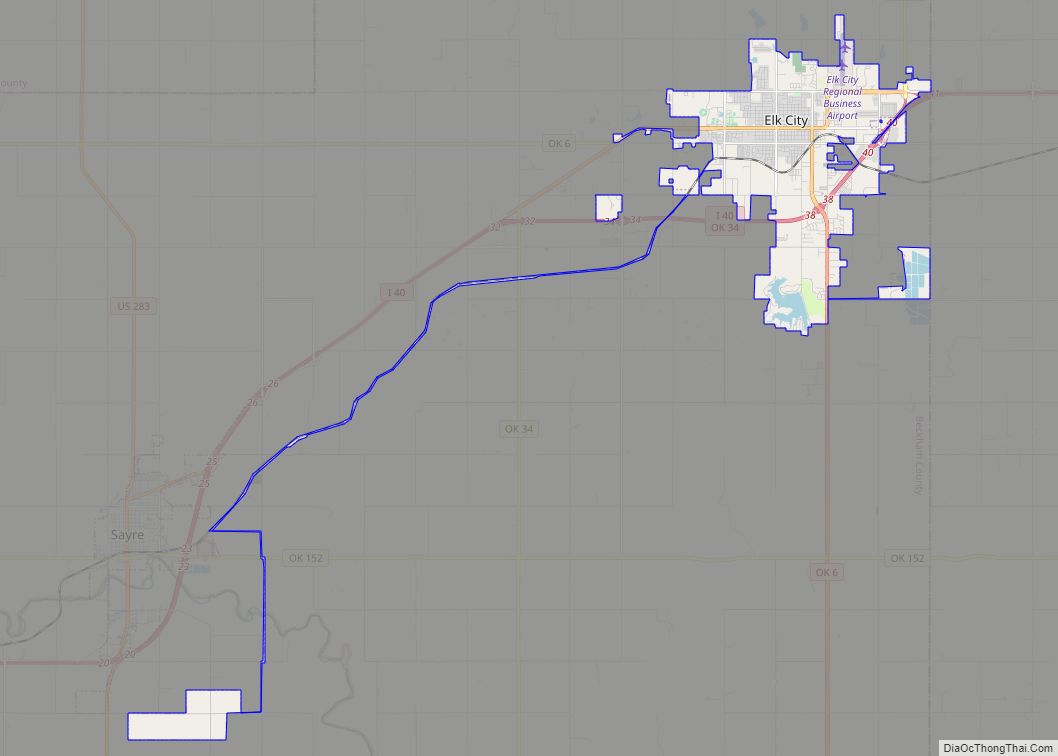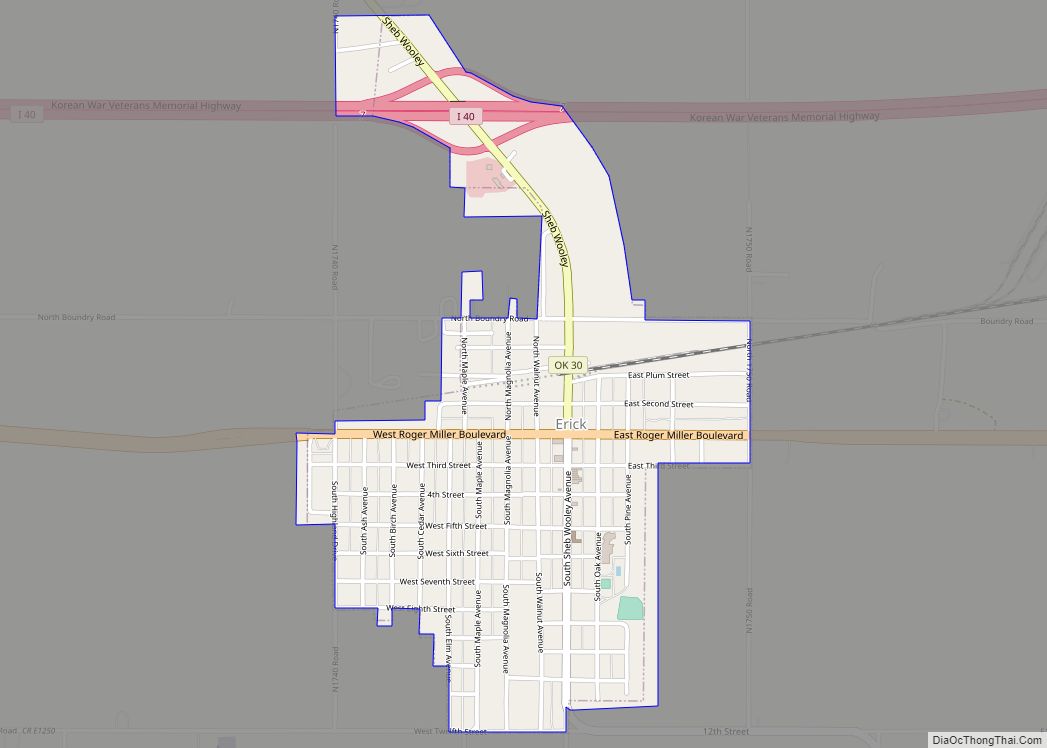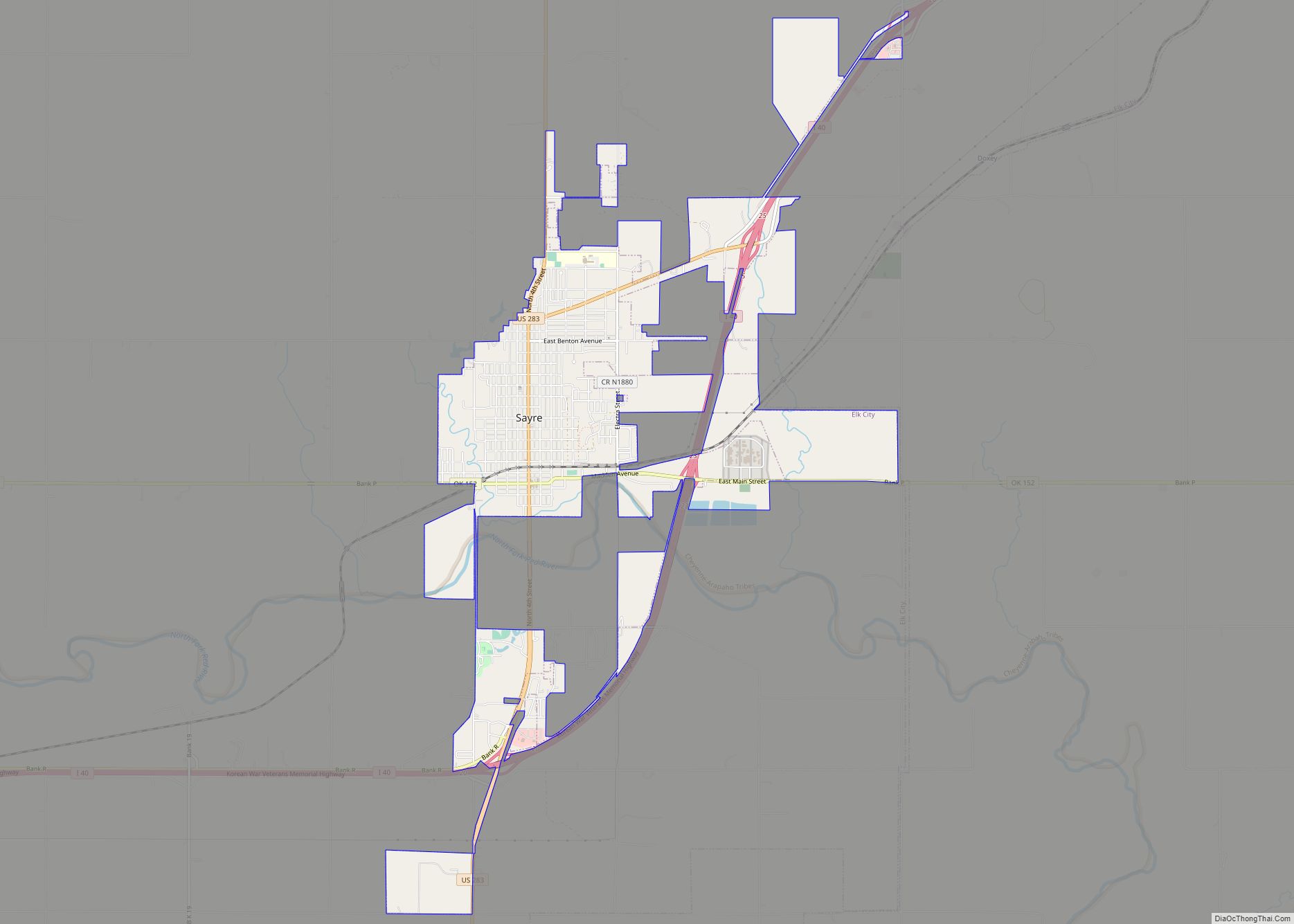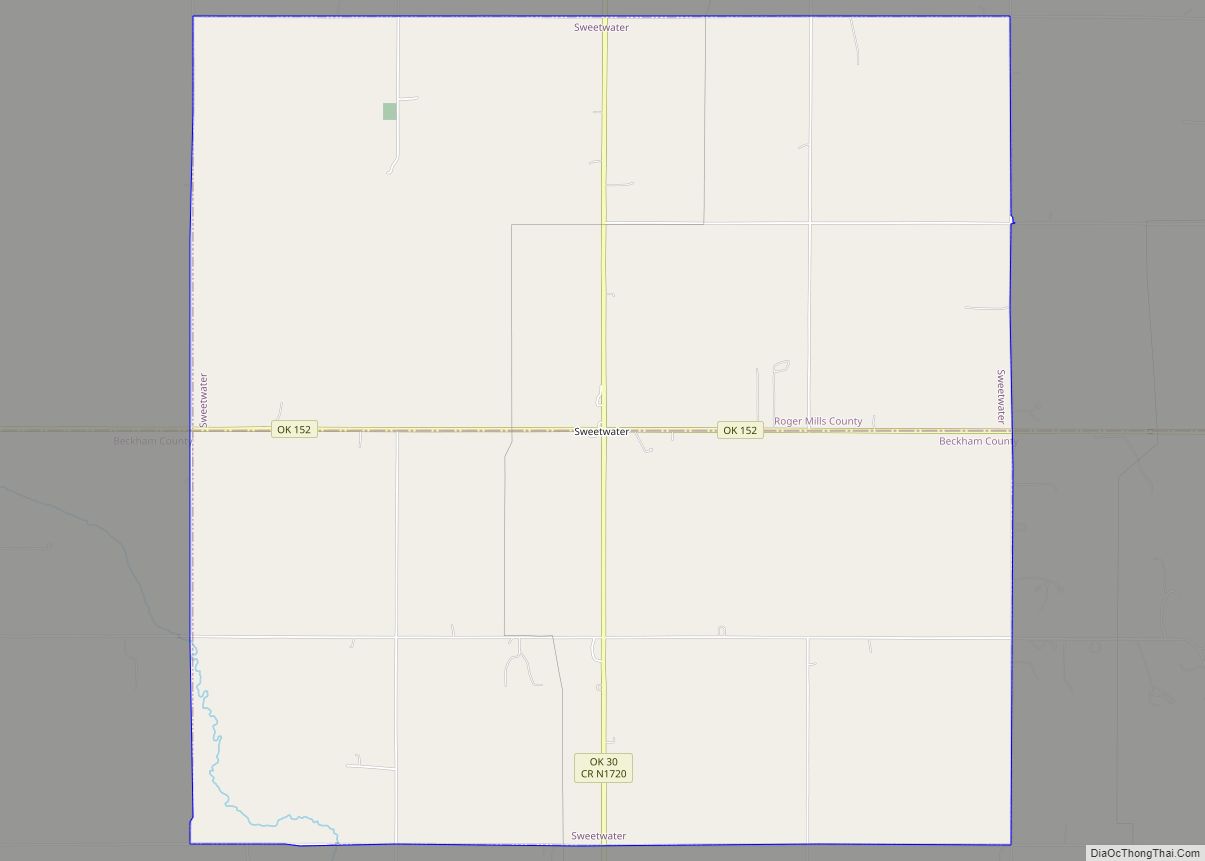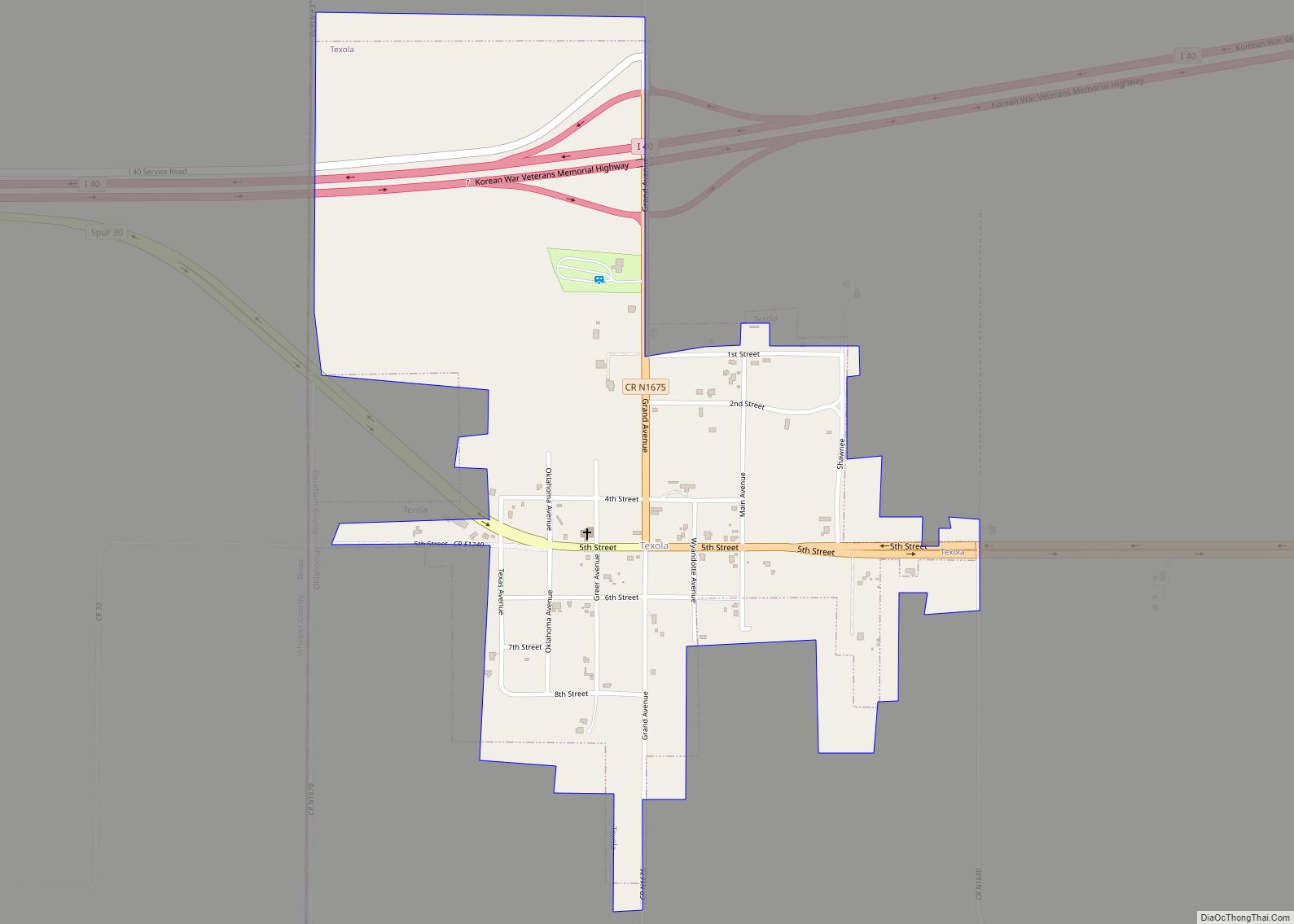Sayre is a small city in, and the county seat of, Beckham County, in western Oklahoma, United States. It is halfway between Oklahoma City, and Amarillo, Texas, on Interstate 40 and the former U.S. Route 66. The population was 4,375 at the 2010 census, the largest recorded by a census since Sayre’s founding. The total was an increase of 6.3 percent from the 2000 census.
| Name: | Sayre city |
|---|---|
| LSAD Code: | 25 |
| LSAD Description: | city (suffix) |
| State: | Oklahoma |
| County: | Beckham County |
| Elevation: | 1,808 ft (551 m) |
| Total Area: | 5.41 sq mi (14.00 km²) |
| Land Area: | 5.39 sq mi (13.95 km²) |
| Water Area: | 0.02 sq mi (0.05 km²) |
| Total Population: | 4,809 |
| Population Density: | 892.87/sq mi (344.72/km²) |
| ZIP code: | 73662 |
| Area code: | 580 |
| FIPS code: | 4065700 |
| GNISfeature ID: | 1097858 |
Online Interactive Map
Click on ![]() to view map in "full screen" mode.
to view map in "full screen" mode.
Sayre location map. Where is Sayre city?
History
After the Civil War, Congress wanted to stimulate the economy and aid the growth of the nation. One way that they achieved this was to promote the building of the western railroads. Upon completion of the Union Pacific-Central Pacific joining together in 1869 with the Golden Spike, other railroads trying to capitalize on commerce and trade also began crossing the western country. This included the Great Northern and Burlington in the far north, and the Southern Pacific on the extreme southern border.
Eventually this would lead to rails crossing Indian Territory, present-day Oklahoma, around the start of the 20th century. A new rail line was extended from Weatherford to Texola by McCabe & Steen Contractors in July 1901. Entrepreneurs would buy land near where the new tracks were being laid, and also near a source of water. The Choctaw Town Site and Improvement Company did this, and when the Choctaw, Oklahoma and Gulf Railroad crossed the North Fork of the Red River in Western Indian Territory an instant town sprang up, which incorporated on 14 September 1901.
The Choctaw Townsite & Improvement Company began selling lots to new “Sooners” arriving to start a new life. The seeds of a new town were on, businessmen came to sell their wares to the new town folk, and within one year the town’s population was up to around 1,000. Pennsylvanian Robert Heysham Sayre, a stockholder of the railroad, gave his name to the newly formed town in 1901.
The Chicago, Rock Island and Pacific Railway Company (called CRI&P), later just the “Rock Island”, leased the new line. The Rock Island Line would complete its march to the Pacific by filling in the line to Tucumcari, New Mexico.
During the period of 1901–1907, Sayre was part of Roger Mills County in Oklahoma Territory. At the time Oklahoma became a state, Beckham County was created and Sayre, which was within the boundary of Beckham County, was named as the temporary county seat. An election in 1908 confirmed Sayre as the permanent seat, with voters preferring it to the town of Erick. The Beckham County Courthouse was completed in 1911, and is still in service over a century later. It is listed on the National Register of Historic Places.
The discovery of oil and gas nearby caused the population to boom between 1920 and 1930. In the 1930s U.S. Route 66, a dream forwarded by fellow Oklahoman Cyrus Avery, would come to Sayre, cementing the town’s fate to fuel the cars and feed the people exploring the country.
In 1940 film director John Ford used Sayre’s Beckham County Courthouse in the film The Grapes of Wrath, based on the famous book by John Steinbeck.
During the 1970s Sayre and the surrounding area benefited from the natural gas and oil development in the Panhandle-Hugoton field, the largest-volume gas field in the United States, and the world’s largest known source of helium. Between 1973 and 1993 the field produced over 8 trillion cubic feet (230,000,000 m³) of gas.
Sayre Road Map
Sayre city Satellite Map
Geography
Sayre is located at 35°17′56″N 99°38′12″W / 35.29889°N 99.63667°W / 35.29889; -99.63667 (35.298940, -99.636556). It is located on the North Fork of the Red River, at an elevation of 1,800 feet (550 m) and 128 miles (206 km) west of Oklahoma City. The area is dominated by low rolling red clay hills.
According to the United States Census Bureau, the city has a total area of 5.6 square miles (14.5 km), of which 0.019 square miles (0.05 km), or 0.36%, is water.
See also
Map of Oklahoma State and its subdivision:- Adair
- Alfalfa
- Atoka
- Beaver
- Beckham
- Blaine
- Bryan
- Caddo
- Canadian
- Carter
- Cherokee
- Choctaw
- Cimarron
- Cleveland
- Coal
- Comanche
- Cotton
- Craig
- Creek
- Custer
- Delaware
- Dewey
- Ellis
- Garfield
- Garvin
- Grady
- Grant
- Greer
- Harmon
- Harper
- Haskell
- Hughes
- Jackson
- Jefferson
- Johnston
- Kay
- Kingfisher
- Kiowa
- Latimer
- Le Flore
- Lincoln
- Logan
- Love
- Major
- Marshall
- Mayes
- McClain
- McCurtain
- McIntosh
- Murray
- Muskogee
- Noble
- Nowata
- Okfuskee
- Oklahoma
- Okmulgee
- Osage
- Ottawa
- Pawnee
- Payne
- Pittsburg
- Pontotoc
- Pottawatomie
- Pushmataha
- Roger Mills
- Rogers
- Seminole
- Sequoyah
- Stephens
- Texas
- Tillman
- Tulsa
- Wagoner
- Washington
- Washita
- Woods
- Woodward
- Alabama
- Alaska
- Arizona
- Arkansas
- California
- Colorado
- Connecticut
- Delaware
- District of Columbia
- Florida
- Georgia
- Hawaii
- Idaho
- Illinois
- Indiana
- Iowa
- Kansas
- Kentucky
- Louisiana
- Maine
- Maryland
- Massachusetts
- Michigan
- Minnesota
- Mississippi
- Missouri
- Montana
- Nebraska
- Nevada
- New Hampshire
- New Jersey
- New Mexico
- New York
- North Carolina
- North Dakota
- Ohio
- Oklahoma
- Oregon
- Pennsylvania
- Rhode Island
- South Carolina
- South Dakota
- Tennessee
- Texas
- Utah
- Vermont
- Virginia
- Washington
- West Virginia
- Wisconsin
- Wyoming
